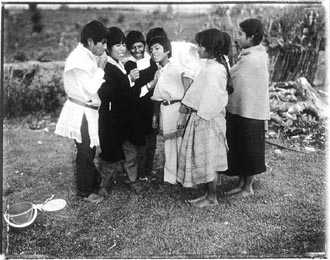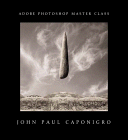| Photography
A couple of fine photography sites thanks to James Luckett at consumptive.org.
Portraits & Dreams
Photographs by Mexican Children
In October of 1991 I set out for San Cristóbal de las Casas in the mist shrouded highlands of Chiapas, the southernmost state of Mexico. The Tzotzíl Indians, descendants of the great Mayan culture, and the Ladinos, descendants of the original Spanish explorers, had been living there side by side since the 1520s. I wanted to create a group of photographs which looked at that legacy through the words and images of children. I decided to teach the children from these two communities—in the colonial city of San Cristóbal de las Casas and in the nearby mountain villages of Chamula and Zinacantán—to use the camera to explore their environments.

[read more]
----------
Middle East Photograph Archive
In the second half of the nineteenth century, the spread of the art of photography and the influx of Europeans into the lands of the Middle East conjoined in the creation of a large number of photographs produced by professional photographers. During these decades, the versatility of photography was enhanced through the development of a variety of chemical techniques, enabling photographers to produce images in relatively large numbers, intended chiefly to satisfy the tourism trade burgeoning in the Middle East and the European thirst for images of the Orient. Antique photographs, of course, stand now as important documents of the history of photography. However, the significance of these artifacts is enriched by their utility as historical documents of the architectural and social history of the Middle East. The photographers chose as subjects the monuments of the Middle East's medieval and ancient past, as well as scenes of daily life. Since the nineteenth century, many of these monuments have been altered through architectural restoration, or their contexts have been radically transformed by the inevitable modernization witnessed in this century. In some cases, and particularly in those scenes depicting social life, the images are the only surviving

[read more]
----------
This arrived yesterday: Adobe Photoshop Master Class: John Paul Caponigro

It's one of those books that I can only read in small doses because my mind starts to explode. It gives me so many new ways to use this amazing tool for my photography. Justin and Eliot will be blown away. They should drop by some time and check it out.
There was some debate over the title of this book. After reviewing hundreds of candidates, the editors decided on Master Class. Concerned that this might be interpreted as a volume filled only with advanced techniques to dazzle the most accomplished professional Photoshop users with technical proficiency, I asked them to clarify what Master Class meant to them.The concensus was, "A Master Class is when an acknowledged practitioner works with aspiring professionals to have them reflect on their performances or art. Usually, it is a demonstration followed by the participants either also creating or asking profound questions in order to create. Essentially,the master works with aspirants because the master has resolved both art, form and technique and is so perceived." Some likened it to the spirit of a Maria Callas Master Class.While the concept/title was daunting,I appreciated the spirit of the suggestion as it placed technique in the service of vision, rather than technique before vision. I might have been more comfortable with Zen and the Art of Photoshop; then, my impulse to keep things simple would have been served. On the other hand, if a true Zen spirit were observed, nothing would be said save, "Look." So, I have tried to find a useful equilibrium in this book, a balancing point between many poles — East and West, personal and universal, aesthetic and technical, analog and digital, to name a few.
(...)
This book is as much about visual problem solving as it is about technical problem solving. You will note that the titles of the core chapters of this book are based on visual principles, not the words found in the program's interface, and not the technical language found in the process. In each of the core chapters, conceptual precedes technical. In truth, the one generates the need for the other. I have chosen to address the visual strategies that I find most useful, ones that may help you make images more successfully. You may even begin to make images in new ways. While not every technique will be suitable for the intentions and needs of every user, there is something for everyone here, purist and pioneer alike. Treat all as food for thought. Then make your own informed decision and take an action of your own making. You could do nothing better. |

